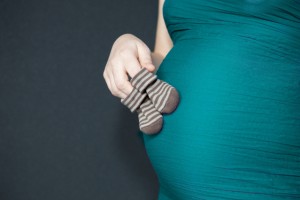During and post pregnancy, your body will experience rapid changes that will place increased stress on your muscles, ligaments and joints. Most women believe pain and discomfort go hand in hand during pregnancy and often believe they must wait until after the birth of their child to experience relief. However this doesn’t have to be the case, as Osteopathic care can help to manage or alleviate pregnancy related aches and pains.
Typical complaints during pregnancy include:
- Pelvic and pubic pain
- Muscle and ligament pain
- Hip pain and sciatica
- Low back pain
- Headaches
- Nausea and heart burn/reflux
- Difficulty taking a full breath
- Digestive problems
- Neck and shoulder tension
- Chest heaviness
- Ankle pain and swelling
- Abdominal tightness
Why do we get pain during pregnancy?
Pain arises during pregnancy due to the increased demands on joints, muscles and ligaments to accommodate the growing baby (2). During pregnancy, the body releases numerous hormones to accommodate the physical changes that are required to support the growing embryo and to prepare the mother for labour. One of which is the hormone known as Relaxin. As the name suggests, Relaxin causes ligaments to relax in order to help the body’s posture to change to accommodate the growing baby. Problems can occur throughout this process as the ligaments surrounding joints become more lax, meaning muscles must contract in order to keep the joints stable. Relaxin helps the pelvis to become more relaxed to allow for an easier birth, however it doesn’t just affect the pelvis. It affects every single ligament and connective tissue in your body from your fingers right down to your ankles.
What’s going on in the body during pregnancy?
The pelvis is the foundation which the whole spinal column balances upon. However, with pregnancy comes a forward tilting of the pelvis to allow the belly to expand outwards as the baby grows and develops. This tilting must be counterbalanced by an increase in low back spinal curvature. The alteration in this curve causes the supportive ligaments and disc structures to be used less, instead being replaced with the muscular system. This role reversal can be used effectively for a short period of time but with the ever growing baby demanding more room, the abdomen must continue to distend, reducing the muscular ability to counterbalance. This eventually leads to a break down in the muscular system’s capacity to be used effectively as muscles can only be stretched so far before they fail (1).
How can Osteopath help?
Osteopathic care throughout pregnancy is designed to enable the woman to adjust and adapt to the structural changes her body is making for the demands of the growing baby with minimal pain or discomfort (1). Osteopathic care also helps to prepare the body for labour, allowing structures to move freely during delivery, as well as allowing the body to recover more effectively from the trauma of labour (2).
What is birth preparation and how can it assist in labour?
Birth preparation typically occurs from the 32nd week of pregnancy and involves weekly or biweekly treatments. It is an important step as it helps the birth canal to move as freely as possible to reduce the chances of the baby becoming stuck and needing medical intervention, as well as reducing the increased strain on the mother’s musculoskeletal system (2).
What does it involve?
Osteopathic birth preparation will involve addressing musculoskeletal imbalances in the spine, hips and pelvis to ensure they are all moving as freely as possible before going into labour (2). This will be done using hands on techniques such as soft tissue massage, stretching and moving joints through their ranges of motion. This limits musculoskeletal strains which can contribute to a difficult labour and trauma to the unborn child.
What is post pregnancy pain and why does it occur?
Many think that after labour the aches and pains of pregnancy should resolve and for the most part they do. However for many they don’t. If you have experienced pain during pregnancy or have had a difficult labour, this can cause pain to continue for up to 2 years post pregnancy. The reason it can impact the body for so long is because following labour more of the hormone Relaxin is released to assist with breastfeeding. Therefore your joints can stay loose for longer and this can become permanent if they are allowed to stretch too far. Typically it affects the joints of the low back, pelvic and pubic regions but can also affect the muscles in these areas as well as the pelvic floor, shoulders, neck, and the abdominal wall.
How can we address it?
Osteopathic care can help to alleviate pain caused by the musculoskeletal system and restore mobility and alignment to the body to help it to recover faster by using a combination of hands-on techniques to improve the structure and function of your body and get your body moving the way it was designed to.
Osteopaths can also help with infants with:
- Feeding difficulties
- Colic or other digestive problems
- Irritability or restlessness
- Flat spots on the head
- Musculoskeletal imbalances
Below is a link for an article on the effectiveness of Osteopathic care in women during pregnancy.
http://jaoa.org/article.aspx?articleid=2094539
Tips to help manage pain during pregnancy and prevent injury
- If you are stretching regularly, for example in yoga, be careful not to push yourself too far. Instead hold a comfortable stretch to prevent over stretching and causing an injury
- Have a gentle exercise program during your pregnancy to strengthen your back and core muscles to prevent them from weakening and causing pain
- Cat and Cow yoga stretches help to keep the spine moving freely and also help in cases where the baby is in a breached position
- Elevate your legs above your heart to help with swelling in the legs
- Ensure you have good posture when sitting for long periods of time – roll your shoulder blades down and into your back, draw your belly button in towards your spine, tuck your pelvis up and under your spine and keep the chest in a neutral position instead of lifting upwards
- Use a pregnancy pillow when in bed
- Wear supportive shoes instead of thongs and high heels
- Use heat to reduced muscular tension
Emma Kopcikas is an Osteopath at our Grange Clinic, North Brisbane and practices Monday – Saturday. You can read more about Emma here
Book online anytime, email info@vibenaturalhealth.com.au, or call our friendly reception team on (07) 3366 7970 to make an appointment and see how Danielle can help you feel your absolute best throughout your pregnancy and beyond.
References
1. DiGiovanna, Eileen L, Stanley Schiowitz, and Dennis J Dowling. An Osteopathic Approach To Diagnosis And Treatment. Philadelphia, PA: Lippincott Williams and Wilkins, 2005. Print.
2. Stone, Caroline. Visceral And Obstetric Osteopathy. Edinburgh: Churchill Livingston/Elsevier, 2007. Print.

